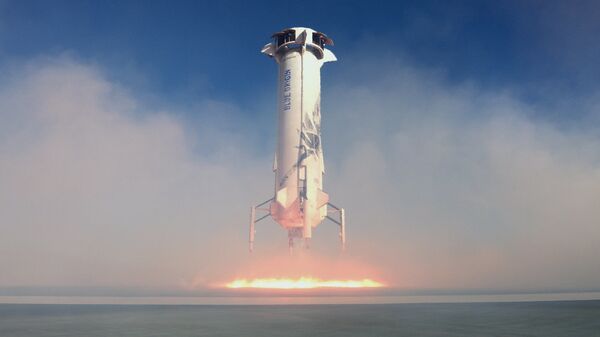Jeff Bezos’ private spaceflight company Blue Origin is expected to launch its reusable suborbital New Shepard rocket booster in a new mission on Thursday, which will mark the seventh time the same craft has been sent into space - a world record for rocket reuse.
New Shepard’s upcoming mission, dubbed NS-13 – the company’s 13th mission to space, is set to fly 12 commercial payloads, including a NASA landing sensor demonstration.
“This is the first of two flights to test these lunar landing technologies, increasing confidence for successful missions in the Artemis program. NS-13 is part of the risk reduction process to test these types of sensors for future missions,” Blue Origin said in a news release.
We've developed @NASA_Technology to help spacecraft make precise landings on the Moon, and on other worlds.
— NASA (@NASA) September 22, 2020
On Thurs., Sept. 24, we're testing this new sensor suite on a @BlueOrigin suborbital launch. Liftoff is targeted for 11am ET. How to watch: https://t.co/4PTuXKq2VF pic.twitter.com/LdU9M9ntts
Alongside the payloads, Blue Origin said that the NS-13 flight will carry “tens of thousands of postcards from students around the world” created for the company’s nonprofit Club for the Future.
On #NewShepard NS-13 the capsule will also carry tens of thousands of postcards from students around the world created for our nonprofit @clubforfuture. Some of the postcards flying will get a special @NASA #Artemis stamp to inspire students about the gift of the 🌕. pic.twitter.com/R0Cbto88vY
— Blue Origin (@blueorigin) September 22, 2020
The launch will take place Thursday, 24 September, at 10:00 am CDT/15:00 UTC.
If launch and landing of the NS-13 is successful, Blue Origin will surpass rival SpaceX in reusing a single rocket, as the latter has reached Blue Origin’s record after a Falcon 9 completed its sixth flight to space on 18 August.
The New Shepard, initially designed for space tourism, conducted its sixth mission in December 2019, carrying a number of NASA-sponsored science experiments to suborbital space.


